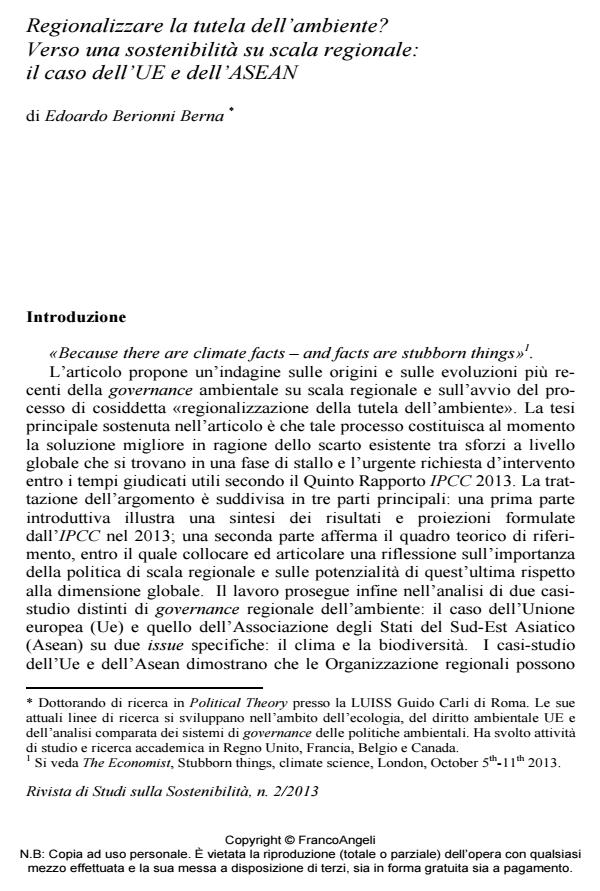Regionalizzare la tutela dell’ambiente? Verso una sostenibilità su scala regionale: il caso dell’UE e dell’ASEAN
Titolo Rivista RIVISTA DI STUDI SULLA SOSTENIBILITA'
Autori/Curatori Berna Edoardo Berionni
Anno di pubblicazione 2014 Fascicolo 2013/2
Lingua Italiano Numero pagine 22 P. 107-128 Dimensione file 684 KB
DOI 10.3280/RISS2013-002006
Il DOI è il codice a barre della proprietà intellettuale: per saperne di più
clicca qui
Qui sotto puoi vedere in anteprima la prima pagina di questo articolo.
Se questo articolo ti interessa, lo puoi acquistare (e scaricare in formato pdf) seguendo le facili indicazioni per acquistare il download credit. Acquista Download Credits per scaricare questo Articolo in formato PDF

FrancoAngeli è membro della Publishers International Linking Association, Inc (PILA)associazione indipendente e non profit per facilitare (attraverso i servizi tecnologici implementati da CrossRef.org) l’accesso degli studiosi ai contenuti digitali nelle pubblicazioni professionali e scientifiche
L’articolo propone un’indagine sulle origini e sulle evoluzioni più recenti della governance ambientale su scala regionale e sull’avvio del processo di cosiddetta «regionalizzazione della tutela dell’ambiente». La tesi sostenuta è che tale processo costituisca al momento la soluzione migliore in ragione dello scarto esistente tra sforzi a livello globale in una fase di stallo e l’urgente richiesta d’intervento entro i tempi giudicati utili secondo il Quinto Rapporto IPCC 2013. Dopo aver affermato il quadro teorico di riferimento, il lavoro analizza due casi-studio distinti di governance regionale dell’ambiente: i casi-studio dell’Ue e dell’Asean. Quest’ultimi dimostrano che le Organizzazione regionali possono rappresentare un interessante laboratorio di governance ambientale dal quale ripartire alla ricerca di risposte innovative e realistiche alla sfida del cambiamento climatico.
Parole chiave:Governance ambientale, regionalismo, cambiamenti climatici, Unione europea, Asean, sostenibilità dello sviluppo.
Berna Edoardo Berionni, Regionalizzare la tutela dell’ambiente? Verso una sostenibilità su scala regionale: il caso dell’UE e dell’ASEAN in "RIVISTA DI STUDI SULLA SOSTENIBILITA'" 2/2013, pp 107-128, DOI: 10.3280/RISS2013-002006